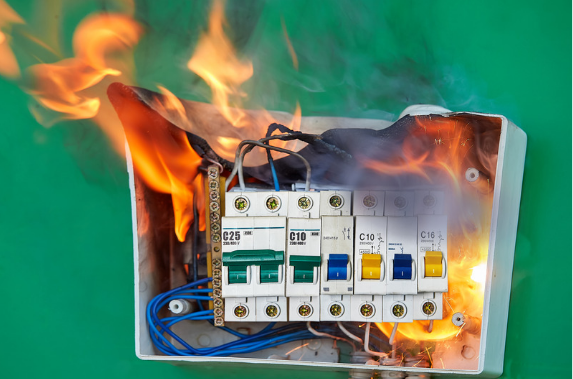Electrical safety refers to the strategies and safety protocols used to prevent accidents and injuries caused by improper use of electrical power in our homes.
The significance of electrical safety at home cannot be overstated, it’s a matter of life and death. This article elucidates the vital aspects of home electrical safety, and its importance, and guides on steps to staying safe at home. Understanding electrical safety matters because it paves the way for the prevention of potential hazards that may lead to electrical fires, shocks, or even death.
5 Home Electrical Safety Tips
The Basics of Home Electrical Systems
At its core, a home electrical system is a complex network of wires, circuits, outlets, and switches that effortlessly distribute electricity throughout your home. Common components include sockets, switches, circuit breakers, light fixtures, and wiring. Through this intricate system, electricity flows from the power lines into your home, passing through meters, and circuit breakers, and eventually transferring to various appliances via outlets.
Nonetheless, home electrical systems aren’t without potential risks. Overloading, short-circuiting, faulty wiring, or even simple wear and tear can lead to electrical fires or shocks if not properly managed.
Identifying Hazards: Key Aspects of Electrical Safety
Staying safe starts with identifying common electrical hazards. These can range from damaged outlets and frayed cords to overloaded outlets. Any irregularity or discrepancy in your home’s electrical system could pose a threat.
Proper grounding plays a crucial role in electrical safety. A well-grounded system protects your appliances, helps avoid electrical shocks, and reduces the risk of electrical fires. Outdated or malfunctioning circuit breakers must also be replaced to prevent electrical mishaps. Equally important is maintaining caution when dealing with water near electrical appliances; water is an excellent conductor of electricity and can lead to severe accidents if mishandled.
Childproofing Your Home: Electrical Safety for Children
Children, due to their love for exploration and limited understanding of possible dangers, are at a greater risk of electrical accidents at home. Simple actions like childproofing electrical outlets can significantly reduce these risks. Other defensive measures include careful cord organization, securing appliances, and not leaving wires or electrical equipment within easy reach.
Educating children about electrical safety is paramount. Adults must guide their young ones in understanding how electricity works and the potential dangers associated with it. The safety of children primarily relies on the attentive and preventive actions of adults in maintaining a secure environment.
Do’s and Don’ts of Electrical Safety
Awareness of some key safety practices and things to avoid can dramatically improve electrical safety at home. One should always turn off an electrical device before unplugging it, plug in electrical heaters directly to outlets to avoid overheating, and regularly inspect electrical appliances and cords for damage.
While DIY temptations may be tempting, one must avoid electrical repairs without professional training; misuse of extension cords, like running them underneath carpets or using them continuously, should be avoided. Also, a rule of thumb demands the safe use of extension cords and power strips and refrain from overloading them. Ensuring regular maintenance of your home’s electrical system also maintains efficiency and safety.
When to Call a Professional: Understanding Your Electrical Safety Limits
Not all electrical problems can be fixed with a quick DIY trick. Issues such as frequent circuit breaker trips, flickering lights, burnt outlets, or buzzing sounds from your electrical panel require professional attention. The risks associated with DIY electrical work — from minor shocks to fatal injuries or fire hazards — are just too high.
Professional electricians offer invaluable expertise when it comes to maintaining home electrical safety. Certified electricians ensure safety standards are met and any potential risks are identified and addressed. Hence, choosing a reputable and qualified electrician is crucial for your home’s long-term electrical safety.
Conclusion
By grasping this comprehensive guide on understanding electrical safety at home, you can safeguard your home and loved ones effectively. Every homeowner must invest time and effort in maintaining their home’s electrical safety. Remember, common electrical hazards such as overloaded outlets, damaged wiring, improperly grounded systems, etc., can be circumvented simply through awareness and caution. Thus, no room should be left for complacency when dealing with electrical safety. Your home should be a sanctuary, not a hazard, and a vital part of ensuring this is prioritizing electrical safety.
Other posts you might enjoy:
What to Expect When Upgrading Your Home’s Electrical Panel
Myths About Electrical Repairs You Need To Stop Believing
A Complete Guide To Buying Electrical Supplies For Your Home






